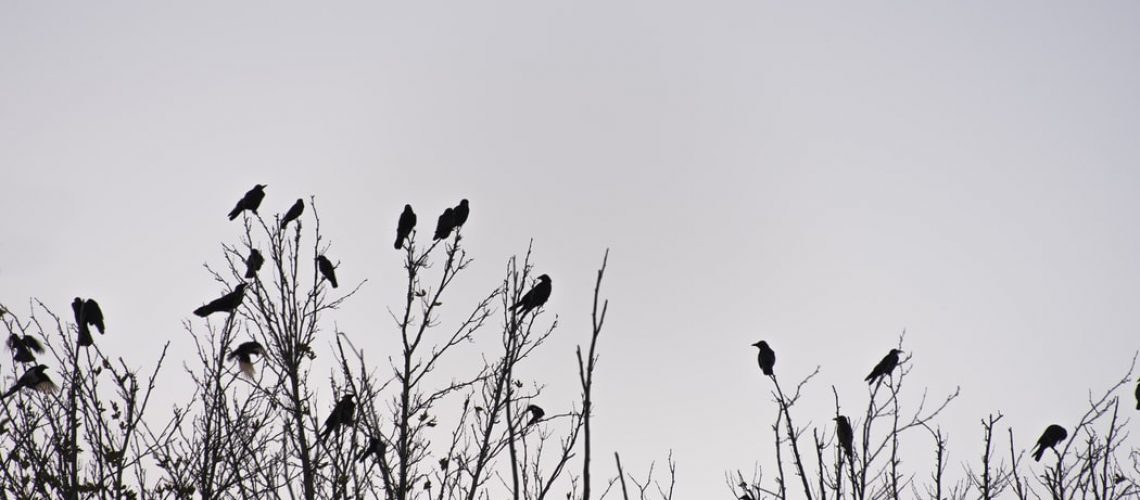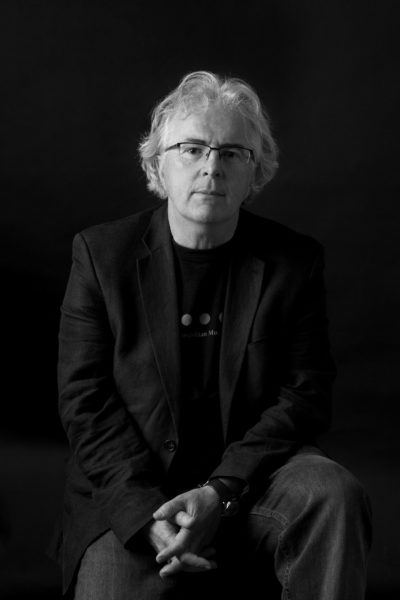The first thing Dermot and I noticed was the early evening drifting of seabirds, as the winter sun set over Ringaskiddy behind us. They looked like black-headed gulls but we couldn’t see, from the distance. What was most striking was the silence, as they flew in Vs of eight or ten or twelve. Seaward, over the narrow channel of water at East Ferry. They flew effortlessly, in precise lines, rotating to take the point of the V. Purposefully; a low white script against the background browns and blacks of the water and the far shore.
I imagined them making their way to some waterside sleeping ground, in the outer harbour or even beyond, on some shingle maybe under a cliff near Roche’s Point or Myrtleville or Fountainstown. Communing quietly through the night, in the dark, beyond the high tide. Or sleeping, beak under wing, as waves pulled and pushed sand and stone below them.
But why did they fly so silently? And why did it seem so striking to me? I don’t know. Maybe it was just because I wasn’t expecting it in the stillness of the day.
We were at the end of our walk along the narrow road that meanders east-west and then north-south by the waterside. We’d parked the car on a small jetty where the Ballynacurra River opens out into the inner estuary.
Then, at the moment the gloom of the dusk becomes darkness, nailing shut the day; when distances becomes vague, perceptions fade and the old part of our imaginations dominates the new part of our senses – then the crows came.
Many of them were already on the high beech and scots pine trees above us. We were under their croaking and cawing before we knew it. But the unmistakeable silhouettes of more rooks in flight were taking shape in the air too. Flocks appearing overhead, out of the north and the east.
One huge gathering arrived, hundreds of birds, chattering to each other as they flew and soared and circled and flapped down to land, and chattering too to those who had already settled in to the night roost. Looking up, our senses were overpowered by the immensity of the numbers and the seeming threat of their closeness, their otherness.
Out over the water we saw more and more of them approach, in an almost endless flow. And just when we thought that must be it, others would appear, in small groups or large. Resolutely. As if by design, or to some very deep rooted plan or purpose hatched before we humans began to measure our time. And as we looked up at them, it appeared that they looked back down, that they knew more about us than we knew about them; that perhaps they even understood us, and our seemingly self-important (but in reality) petty passings to and fro. As if they shared that knowing among them up in the trees, and calmly accepted it as night accepts morning.
Wheeling overhead, descending on treetops and branches and roadside wires. Noisy, brash and dark. Thousands and thousands of them, there, right there, just there – settling. Quieting down for the coming of the night.
Now, corvids are notoriously social beings, they seem to do almost everything in groups and families. They nest in large numbers, you can see the rookeries appear in the high trees this time of year. But the night roosts can comprise vast numbers of birds.
Mark Cocker, in his immensely beautiful observation on corvids (Crow Country, Vintage, 2008) mentions numbers of up to 40,000 birds in one roost in Buckenham Carrs in Norfolk. That’s hard to imagine. Certainly in the roost we saw there were thousands but nothing like that. When I went back a couple of weeks later, with Cathy, the number was smaller, but the whole group then crossed the water to what seemed like a vast gathering the large woods there.
But the numbers don’t matter, really, because what was most overpowering was the sense of them. The presence they were able to generate, the meaning and power behind their manifestation.
At times it felt threatening, at times exhilarating, at times otherworldly – as more and more birds arrived and landed. Their range of calls, chattering, cawing, squawking, croaking and chirping even. The deep guttural cough of the rook, the high cack-cack-cack of the jackdaw. The density of the sound, like a blanket above us. Rooks and jackdaws, but mostly rooks, with their grey beaks and black claws and the deep dark serrations of their wingtips clear against the sky as they noisily and gracefully descended.
And we knew that now we weren’t in our world anymore, or in our time, we were in theirs. We had been transported. The hairs on the back of our necks told us how strange and inexplicable the shift that had taken place.
This was older than us and beyond us, of a wisdom that came up from the earth and down from the sky when earth and sky were young, and we humans were unknown and unnecessary; we were the anachronism in this scene, these gatherings have been been happening for countless millennia – this communion.
We stood there, just waiting, not speaking. And then it was pitch dark and the birds became still and silent and obscure, and eventually unseen in the thickening shadow above us. In their own time, their own space.
–
–
Video of Roost at Buckenham Marshes in Norfolk:
[youtube https://www.youtube.com/watch?v=AA_lXkYz_zs&w=650&h=350]
Feature Image: David Brook

